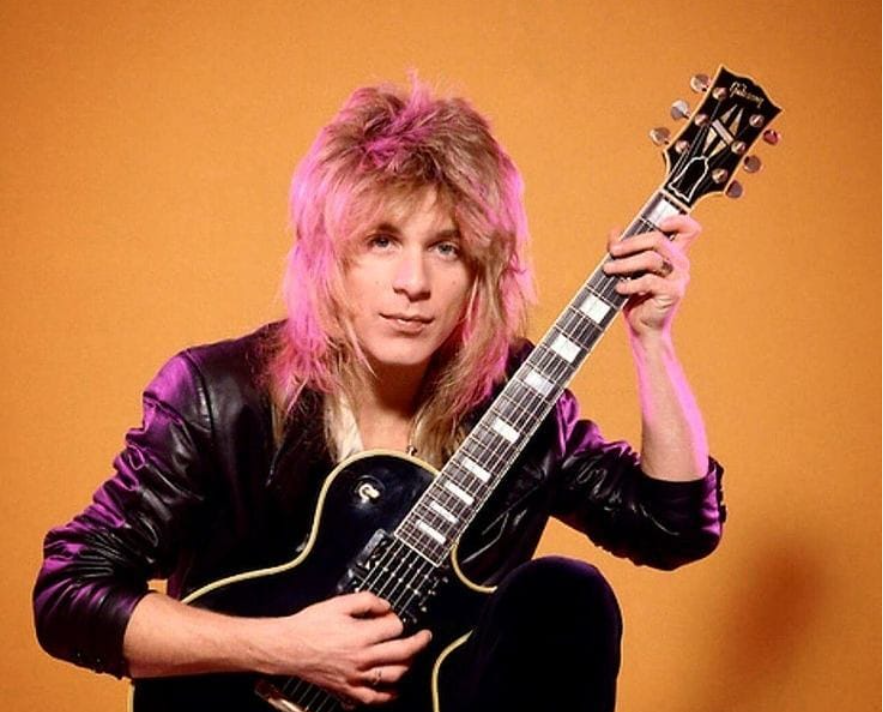Randy Rhoads, who was only 5 feet 7 inches tall, never relied on his physical presence to leave an impression. While other members of the metal scene displayed massive bodies and fantastical personas, Randy attracted attention with his exceptional artistic ability, sliding around the fretboard with grace and accuracy akin to a calligrapher drawing fire. One of the most influential musical brains to ever hold a guitar was ensconced in his slender 105-pound frame. His legacy, which was incredibly successful in redefining rock and metal, continues to reverberate through solos performed in dimly lit rehearsal spaces on different continents.

Rhoads added a significantly higher degree of finesse to a music that is sometimes written off as raw force by fusing fierce electric riffs with classical background. His voice was emotionally rich but surgically clear. He created a sound that was especially avant-garde, evoking analogies to baroque artists whose work he studied almost obsessively as well as metal peers like Eddie Van Halen. Every note and every silence had a purpose.
Randy Rhoads – Bio Data and Career Overview
| Attribute | Details |
|---|---|
| Full Name | Randall William Rhoads |
| Date of Birth | December 6, 1956 |
| Place of Birth | Santa Monica, California, U.S. |
| Height | 5 feet 7 inches (170 cm) |
| Weight | 105 lbs (48 kg) |
| Date of Death | March 19, 1982 |
| Age at Death | 25 years |
| Place of Death | Leesburg, Florida, U.S. |
| Occupation | Guitarist, Composer |
| Years Active | 1972–1982 |
| Notable Bands | Quiet Riot, Ozzy Osbourne |
| Musical Style | Heavy Metal, Hard Rock, Neoclassical Metal |
| Posthumous Honors | Rock and Roll Hall of Fame Inductee, 2021 |
| Reference Source | www.rockhall.com/inductees/randy-rhoads |
Rhoads was a co-founder of Quiet Riot in the late 1970s, a band that first gained popularity abroad rather than in Los Angeles. The fact that their early records were only available in Japan would subsequently appear ridiculous in light of Randy’s rapidly rising stardom. He was creating a visual and aural language in addition to producing riffs. Even people who had never heard of him could recognize his polka-dot guitars, which he frequently carried around like medieval weapons, and they became legendary.
However, Randy’s genius was not completely recognized until 1979, when Ozzy Osbourne hired him. Rhoads offered structure to the turmoil, while Ozzy added vocal depth and stage insanity. Songs like “Mr. Crowley” and “Crazy Train” were technical masterpieces, stacked with intricate arpeggios, deft tremolo work, and incredible speed. Nothing ever felt overdone, though. Like vibrating bars sculpting melodic architecture, his solos were precisely balanced.
Rhoads used his classical training to create something incredibly original. Often criticized for being brazen and one-dimensional, metal finally had a voice that could be nuanced. A generation of guitarists was inspired by him, and they were no longer forced to choose between Black Sabbath and Bach. His style was especially helpful for younger musicians who were trying to find their own identities since it bridged the gap between tradition and rebellion.
Randy’s physique stood in stark contrast to the stoic giants surrounding him. He appeared nearly invisible on stage, adjacent to tall Marshall stacks or next to a boisterous Ozzy. But he grew as soon as his fingers started moving up the strings. The crowd witnessed a titan who could bend time and pitch instead of a 5-foot-7-inch guy. His little stature turned into a symbol for underestimating.
Rhoads demonstrated a very effective work ethic during his short but incredibly successful career. Before fame found him, he taught guitar for five years, practiced relentlessly, and kept a low profile despite the temptations of rock. He rarely drank, never smoked, and frequently went back to his hotel to study music theory after performances. His untimely death was all the more sad because of this disciplined intensity. He was more than just a budding musician; he was a scholar of sound, a craftsman, and a thinker.
In 1982, Randy lost his life in a bizarre plane crash while on tour in Florida, which also killed the tour bus driver and the pilot. In an act of foolish showmanship, the pilot buzzed the band’s tour bus in a light aircraft, clipped the vehicle, and crashed right away. The loss was so devastatingly irreversible and stunning that it sent shockwaves across the music industry for decades. Because of his almost infinite potential—an entire period of metal innovation was lost in an instant—his loss was especially felt.
Nevertheless, in spite of his brief existence, Rhoads’ impact has grown over time. His iconic Jackson guitar is still among the company’s top-selling models. Guitar schools break down his solos note by note. Numerous lists of the “Greatest Guitarists” have included him. Additionally, he was posthumously honored by the Rock and Roll Hall of Fame in 2021, formally acknowledging a contribution that musicians and fans have long recognized.
Rhoads is often mentioned as a model in discussions with other artists. Ozzy’s bandmate Zakk Wylde, who took Rhoads’ place, has frequently expressed admiration for him. Known for their own intricate approaches, Steve Vai and Yngwie Malmsteen have acknowledged Rhoads’ influence on their growth. Rhoads contributed to defining what modern metal could become, both sonically and conceptually, by carefully advancing the vocabulary of guitars.











